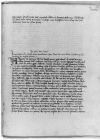Biological warfare at the 1346 siege of Caffa - PubMed (original) (raw)
Biological warfare at the 1346 siege of Caffa
Mark Wheelis. Emerg Infect Dis. 2002 Sep.
Abstract
On the basis of a 14th-century account by the Genoese Gabriele de' Mussi, the Black Death is widely believed to have reached Europe from the Crimea as the result of a biological warfare attack. This is not only of great historical interest but also relevant to current efforts to evaluate the threat of military or terrorist use of biological weapons. Based on published translations of the de' Mussi manuscript, other 14th-century accounts of the Black Death, and secondary scholarly literature, I conclude that the claim that biological warfare was used at Caffa is plausible and provides the best explanation of the entry of plague into the city. This theory is consistent with the technology of the times and with contemporary notions of disease causation; however, the entry of plague into Europe from the Crimea likely occurred independent of this event.
Figures
Figure 1
Tentative chronology of the initial spread of plague in the mid-14th century (–14).
Figure 2
The first page of the narrative of Gabriele de’ Mussi. At the top of the page are the last few lines of the preceding narrative; de’ Mussi’s begins in the middle of the page. The first three lines, and the large “A” are in red ink, as are two other letters and miscellaneous pen-strokes; otherwise it is in black ink. Manuscript R 262, fos 74r; reproduced with the permission of the Library of the University of Wroclaw, Poland.
Similar articles
- Misunderstandings of the transmission of the Black Death to Western Europe : a critical review of De Mussis's account.
Nam J. Nam J. Uisahak. 2021 Dec;30(3):465-498. doi: 10.13081/kjmh.2021.30.465. Uisahak. 2021. PMID: 35073558 Free PMC article. Review. English. - Biological Warfare Plan in the 17th Century—the Siege of Candia, 1648–1669.
Thalassinou E, Tsiamis C, Poulakou-Rebelakou E, Hatzakis A. Thalassinou E, et al. Emerg Infect Dis. 2015 Dec;21(12):2148-53. doi: 10.3201/eid2112.130822. Emerg Infect Dis. 2015. PMID: 26894254 Free PMC article. - Was the 'Hittite plague' an epidemic of tularemia?
Martín-Serradilla JI, Guerrero-Peral AL, Laherrán E. Martín-Serradilla JI, et al. Med Hypotheses. 2008;71(1):154-5. doi: 10.1016/j.mehy.2008.01.019. Epub 2008 Mar 5. Med Hypotheses. 2008. PMID: 18321655 No abstract available. - [Bioterrorism: a new problem of public health].
del Río-Chiriboga C, Franco-Paredes C. del Río-Chiriboga C, et al. Salud Publica Mex. 2001 Nov-Dec;43(6):585-8. Salud Publica Mex. 2001. PMID: 11816235 Spanish. No abstract available. - The history of the plague and the research on the causative agent Yersinia pestis.
Zietz BP, Dunkelberg H. Zietz BP, et al. Int J Hyg Environ Health. 2004 Feb;207(2):165-78. doi: 10.1078/1438-4639-00259. Int J Hyg Environ Health. 2004. PMID: 15031959 Free PMC article. Review.
Cited by
- EcoHealth and the Black Death in the Year of the Rat.
Zhang SY, Yu L, Daszak P. Zhang SY, et al. Ecohealth. 2008 Jun;5(2):99-100. doi: 10.1007/s10393-008-0181-1. Epub 2008 Jul 15. Ecohealth. 2008. PMID: 18787913 Free PMC article. No abstract available. - Misunderstandings of the transmission of the Black Death to Western Europe : a critical review of De Mussis's account.
Nam J. Nam J. Uisahak. 2021 Dec;30(3):465-498. doi: 10.13081/kjmh.2021.30.465. Uisahak. 2021. PMID: 35073558 Free PMC article. Review. English. - Yersinia pestis: the Natural History of Plague.
Barbieri R, Signoli M, Chevé D, Costedoat C, Tzortzis S, Aboudharam G, Raoult D, Drancourt M. Barbieri R, et al. Clin Microbiol Rev. 2020 Dec 9;34(1):e00044-19. doi: 10.1128/CMR.00044-19. Print 2020 Dec 16. Clin Microbiol Rev. 2020. PMID: 33298527 Free PMC article. Review. - Preventive Measures against Pandemics from the Beginning of Civilization to Nowadays-How Everything Has Remained the Same over the Millennia.
Vitiello L, Ilari S, Sansone L, Belli M, Cristina M, Marcolongo F, Tomino C, Gatta L, Mollace V, Bonassi S, Muscoli C, Russo P. Vitiello L, et al. J Clin Med. 2022 Apr 1;11(7):1960. doi: 10.3390/jcm11071960. J Clin Med. 2022. PMID: 35407571 Free PMC article. Review. - Integrative approach using Yersinia pestis genomes to revisit the historical landscape of plague during the Medieval Period.
Namouchi A, Guellil M, Kersten O, Hänsch S, Ottoni C, Schmid BV, Pacciani E, Quaglia L, Vermunt M, Bauer EL, Derrick M, Jensen AØ, Kacki S, Cohn SK Jr, Stenseth NC, Bramanti B. Namouchi A, et al. Proc Natl Acad Sci U S A. 2018 Dec 11;115(50):E11790-E11797. doi: 10.1073/pnas.1812865115. Epub 2018 Nov 26. Proc Natl Acad Sci U S A. 2018. PMID: 30478041 Free PMC article.
References
- Norris J. East or West? The geographic origin of the Black Death. Bull Hist Med. 1977;51:1–24. - PubMed
- Henschel AW. Document zur Geschichte des schwarzen Todes. Archives für die gesammte Medizin 1842;2:26–59.
- Tononi AG. La Peste Dell’ Anno 1348. Giornale Ligustico de Archeologia. Storia e Letteratura. 1884;11:139–52.
- Horrox R, ed. The Black Death. Manchester: Manchester University Press; 1994. p. 14–26.
Publication types
MeSH terms
LinkOut - more resources
Full Text Sources
Medical

